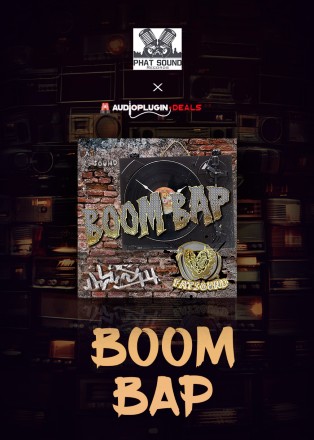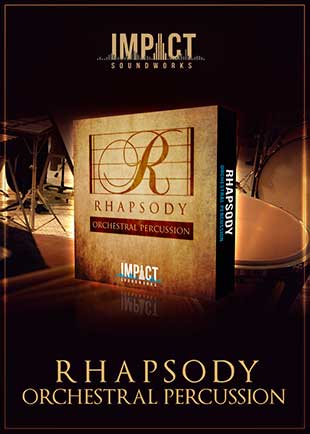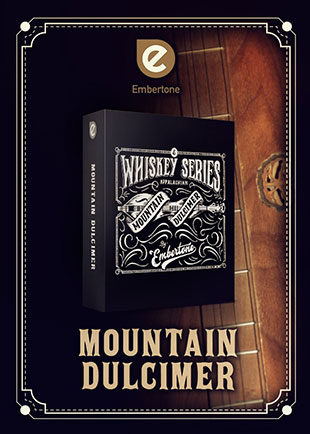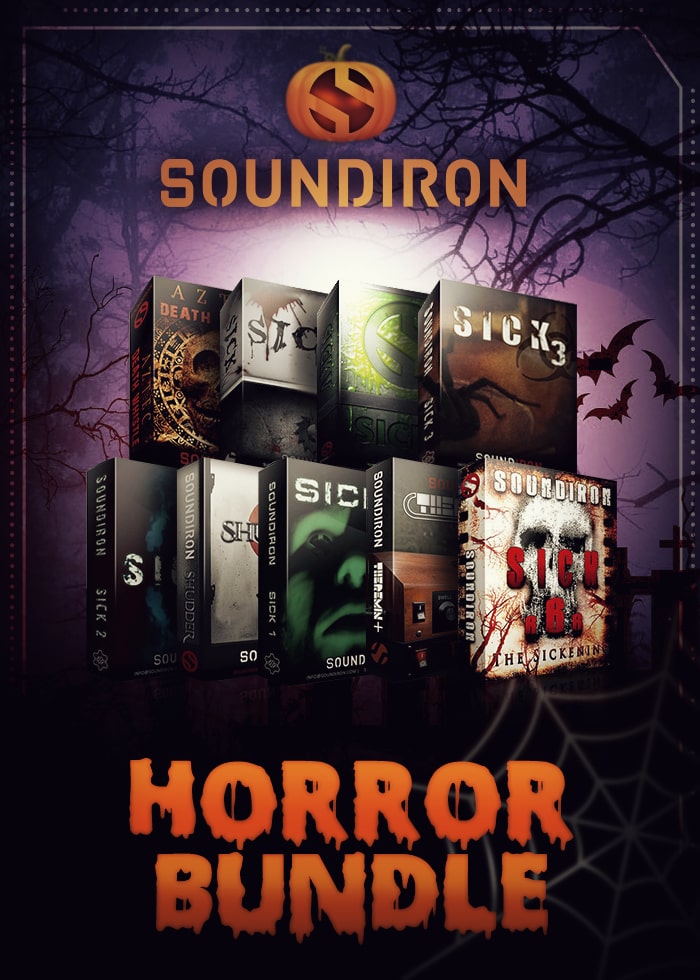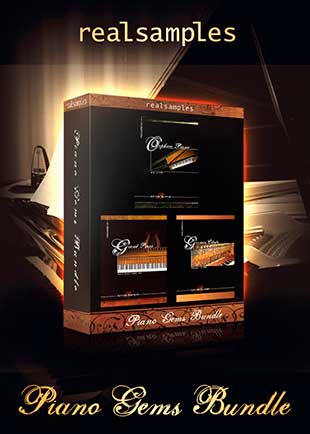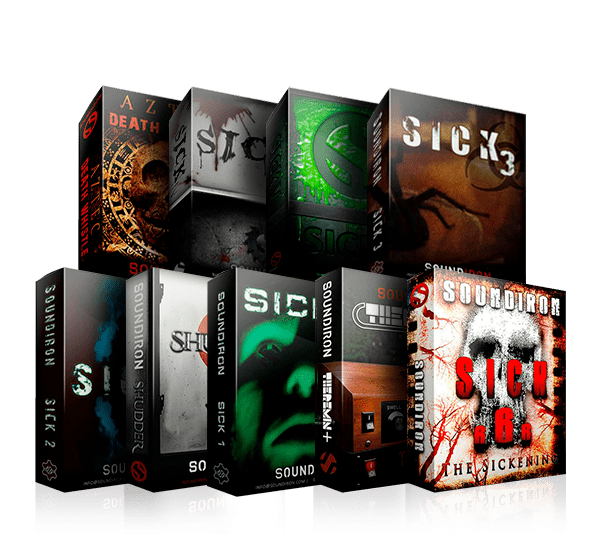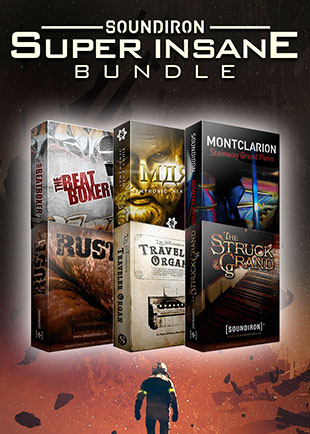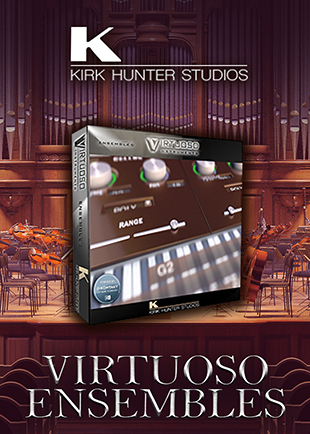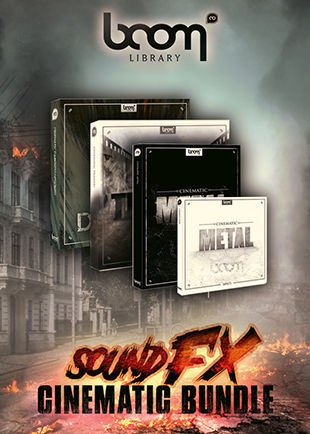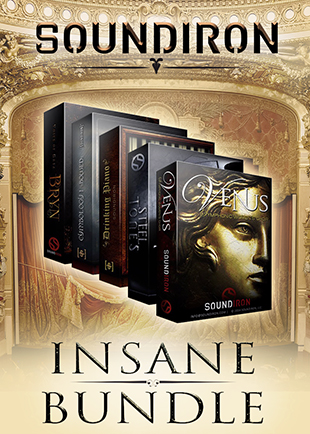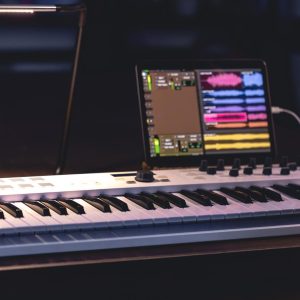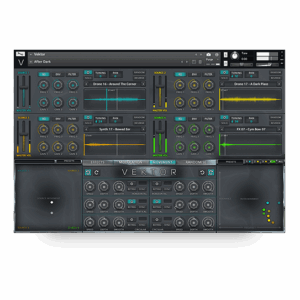Sometimes, you just need a really specific type of sound in one of your compositions. Or maybe sometimes you just need something cool or unique to inspire you. There are around 70 different award-winning Kontakt libraries on the Audio Plugin Deals store right now, so perhaps we can help you find what you’re looking for!
I’ve scoured the store and selected 5 of those instruments to show you today. These are Arctic Strings by Frozenplain, Lyrical Vocal Phrases by Sonuscore, Temple Drums by Soundiron, Acoustic Revolutions by Impact Soundworks, and Fingerpick by Realitone.
Let’s go ahead and start with Arctic Strings.

#1 ARCTIC STRINGS by Frozenplain
You might be thinking, “Ah, it’s just another string library, move on dude…” to which I say, it’s not going to compete with any of the big string libraries considering it goes for a pretty niche sound – something cold and eerie, hence the name Arctic Strings. A library like Spitfire’s Tundra might come close, but for the price point this library’s a no-brainer. Frozenplain have done a pretty nice job with this library, and I had a fun time playing around with it. (incidentally, Brian from Audio Plugin Deals has done a great video covering Frozenplain’s product range – if you have some spare time, go and check that out!)
Interface and Controls
The interface is very simple and easy to use, and also features an attractive design – when you play a note on the keyboard, the background image lights up with a beautiful animation of the Northern Lights. It gets you right into the arctic mood!
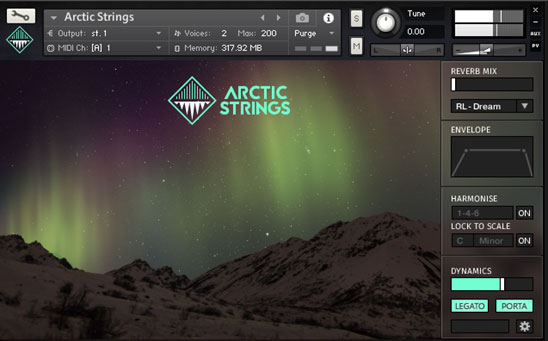
All the controls are to the right of the interface window. Up the top, we have some basic reverb controls, which really add to the iciness of the sound when implemented. Frozenplain gives us some great reverb presets (my personal favourites being Dream and Wind). When drenched in reverb, the samples take on an entirely new icy character.
Below the reverb is a basic envelope control for adjusting the attack, decay, sustain and release of your sound in case it’s too quick or too slow for your taste.
Underneath this is a harmonise control, used for triggering harmonies from single notes. There are a good variety of harmonies given to us (1-4-6, 1-3-6, thirds, etc.) and all of these can be locked to a major or minor scale of your choice.
There’s of course a dynamics slider, but this is controlled via the modwheel anyway.
The legato button toggles polyphony (the ability to play more than one note at once) when clicked. The portamento mode is enabled when you play softly on your keyboard (velocity values 25 and under are interpreted as portamento). Admittedly, the portamento sounds more like an 80s synth than a group of string players, but it still has an eerie sound which could be isolated and processed through various audio plugins in a sound design context. Heck, you could even isolate the portamento between two notes and then layer it to make your very own shepard tone. Lots of possibilities here!
There is a settings menu in the library, which allows you to do things such as set keyswitches for some of the controls, adjust which velocity values will trigger the portamento mode, etc.
Finally, Frozenplain give us an extensive FX rack full of great toys which we can use to tweak our sound with. The rotator and the sequencer are fun to play with, and even the distortion isn’t too bad when used subtly.
Technical Requirements:
- FULL version of Kontakt 5.1 or above
- 390 MB disk space
#2 LYRICAL VOCAL PHRASES by Sonuscore
Lyrical Vocal Phrases is, as the name suggests, a phrase-based library. Don’t let this fact turn you off however, because this library’s versatility may surprise you. It’s designed so you can construct phrases from pre-recorded musical sequences.
Interface and Controls
Once again, the interface is quite minimal, with the list of ‘phrase groups’ taking up most of the window.

The phrase groups correspond to various scales, and we have a wide variety of these to work with: minor, ethno major, dorian, lydian, and even some spoken/whispered vocal FX. There’s also a single ‘speed’ dial in the middle to adjust the speed of a phrase, to give you more control over how the phrase matches up with your composition.
The FX page is also fairly minimal, with some basic EQ, Delay and Reverb controls, as well as a ‘Mystique’ button which, according to Sonuscore’s user manual, “adds a unique mix of chorus, experimental impulse responses and a stereo spreader” and can be used “whenever the music needs to be more mysterious.”

Keyboard Mapping
The keys are intelligently mapped. The red keyswitches at the bottom give you the ability to change the tonality (key) of your phrase. Phrase openings are mapped to the blue keys, phrase middles are mapped to the yellow keys and phrase endings are mapped to the orange keys up the top. The green keyswitches are for short phrase endings.

The white keys at the top of the keyboard all correspond to the phrase groups, and they light up red when you enable each phrase group in the main window. This enables you to switch between those groups efficiently.
Technical Requirements:
- FULL version of Kontakt 5.6.8 or above
- 5 GB disk space
- 4 GB RAM
#3 TEMPLE DRUMS by Soundiron
Temple Drums is a percussion library sampled in an underground stone-walled chamber. Using the library, you can already hear this space through the big boomy reverb that’s present in all the samples. It contains a good selection of percussion instruments – Bass Drums, Tom Drums, Bongos, Snares, Finger Cymbals, Gongs, etc.
About the Patches
In my video, I only went through the main patch (Temple Drums Ensemble), however there are actually six patches altogether: Ensemble, Bells, Deep Drums, High Drums, Temple of Dune and Temple Zephyrs. The Ensemble patch is basically the Bells, Deep Drums and High Drums patches put together and presented in one package. It also contains some pre-recorded drum fills. However, the individual patches for Bells, Deep Drums and High Drums give you a more significant level of control over those specific instruments.
Temple of Dune and Temple Zephyrs contain a series of unique atmospheric pad-like sounds and drones, which have an eerie ‘scraped’ character.
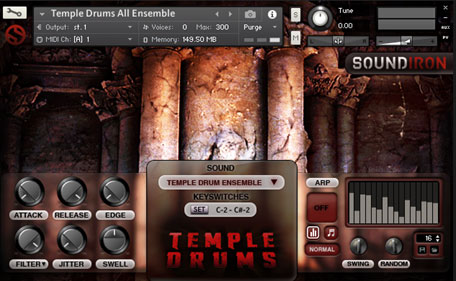
Controls
SoundIron gives us attack and release controls for each patch, along with some more parameters which we can use to fine-tune our sounds. They also give us an arpeggiator which allows us to craft some cool rhythms using the drums we’ve selected (by holding their corresponding keys down, of course).
The FX rack is also fairly extensive. It includes chorus, distortion and amp plugins as well as the usual EQ, reverb and delay.
Technical Requirements:
- FULL version of Kontakt 5.5 or later
- 57 GB disk space
#4 ACOUSTIC REVOLUTIONS 3 by Impact Soundworks
Acoustic Revolutions is a library containing tempo-synced acoustic guitar strumming patterns in three different time signatures – 4/4, 3/4 and 6/8. The library gives us 48 different rhythms to pick and choose from, and incorporate into our music however we like.

Interface and Controls
Upon loading the instrument, you’ll find a grid full of 48 rhythms, with the first three rhythms already enabled by default. We can load or unload the rest to our heart’s content. There’s also buttons at the bottom to load or unload all the rhythms corresponding to a particular time signature. At the top, we’re given our rhythm name and time signature, as well as a graphical representation of the rhythm we’ve selected.
Acoustic Revolutions gives us three different ways of playing chords. I didn’t cover these in the video, however the interface itself contains detailed explanations as to how these work. You can explore these using the “Fret Mode” section at the left of the interface window, and choose what works best for you.
Right at the top of the interface is the option to select how long the guitar strumming will continue for after you let go of the keys on your keyboard. This is set to a half-note (minim) by default, but you can change this to a quarter-note (crotchet), eighth-note (quaver), whole-note (semibreve) or even set the strumming to stop immediately as you release the keys.
Once again, this library also contains an FX Rack with basic compressor, EQ, chorus, delay, reverb and limiter controls.
Keyboard Mapping

The key mapping is very easy to navigate for all three “fret modes.” Pictured here is the default fret mode.
The blue keys are used for playing your desired chords, and these chords will be strummed based on the rhythm you’ve selected. You can play all kinds of chords here: from straight triads to suspended chords to major/minor 7ths. Each of the cyan keys at the top of the keyboard correspond to one of the rhythms which you’ve enabled from the menu. Down the bottom are some pink and red keys, which are assigned to guitar effects such as muted strumming, falls and percussive FX (most of which are synced to the last chord you played).
Technical Requirements
- FULL version of Kontakt 5.5 or later
- 9 GB disk space, additional 12 GB required for the optional samples
- 2 GB RAM
#5 FINGERPICK by Realitone
Realitone have done a fantastic job with this library. Of the five Kontakt instruments I’ve reviewed today, this one’s my favourite. Fingerpick is another acoustic guitar library, but this time it’s a playable fingerpicking instrument (as the name suggests). It’s got a fantastic sound, and the articulations sound amazing.
Interface
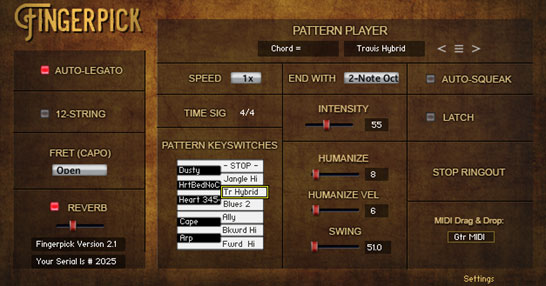
Fingerpick’s interface probably has the most controls out of all the libraries I’m showing you. Realitone gives us an auto-legato mode (enabled by default), which triggers hammer-on and pull-off sounds on notes that are 1 or 2 semitones apart. There’s a 12-string mode which (yep, you guessed it) emulates the sound of a 12-string guitar, with the strings tuned apart in octaves (or even unison, if you play around in the settings page). There’s a control to trigger realistic fret noises and squeaks, and that’s also adjustable in the settings page. There’s even a menu to emulate the sound of a guitar with a capo (see video for further explanation).
Fingerpick also gives us a series of fingerpicking patterns / rhythms based on chords which you play on the green keys (see Keyboard Mapping section), in a style of your choice (there are 11 fingerpicking styles to choose from). These patterns can be swung and humanized too, through the controls given on the interface.
Keyboard Mapping

Sample library developers are great with their keyboard mappings, and once again Realitone is no exception. The orange keys are to switch between the different ‘guitar capo’ sounds. The blue keys span the playable area of the instrument. The yellow keys give us the ability to switch between different fingerpicking styles quickly. Finally, we play chords on the green keys to have them converted into a fingerpicking pattern. You might’ve noticed the cyan key towards the bottom of the keyboard – holding this down and playing on the blue keys will cause the legato transitions to be triggered across all the notes.
Technical Requirements:
- Kontakt Player OR Full
- 2 GB Disk Space

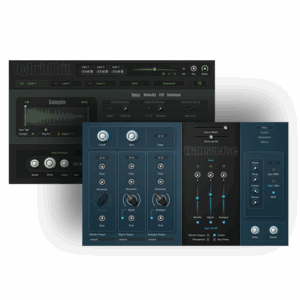
 Subscribe
Subscribe
